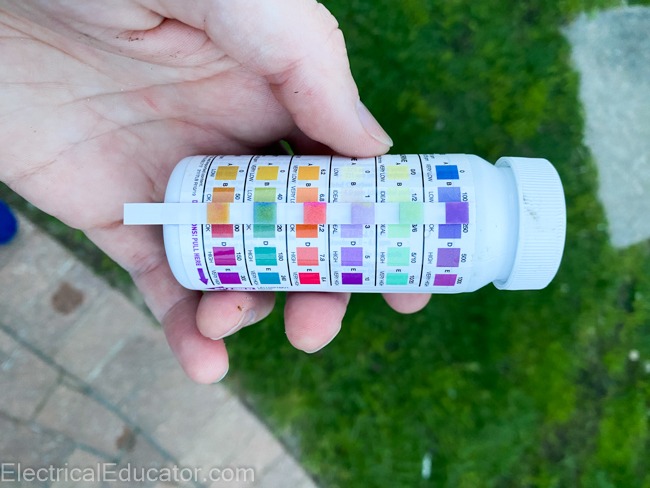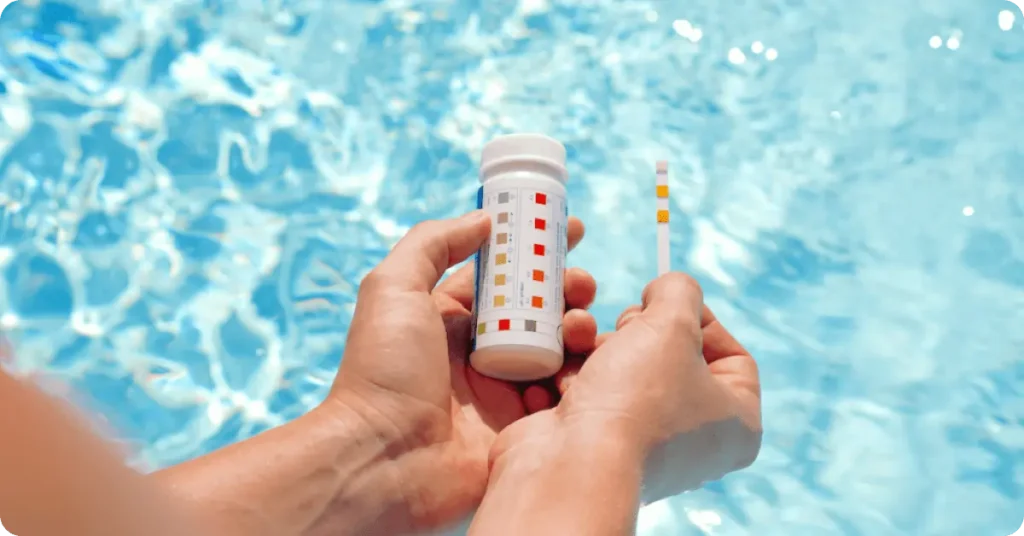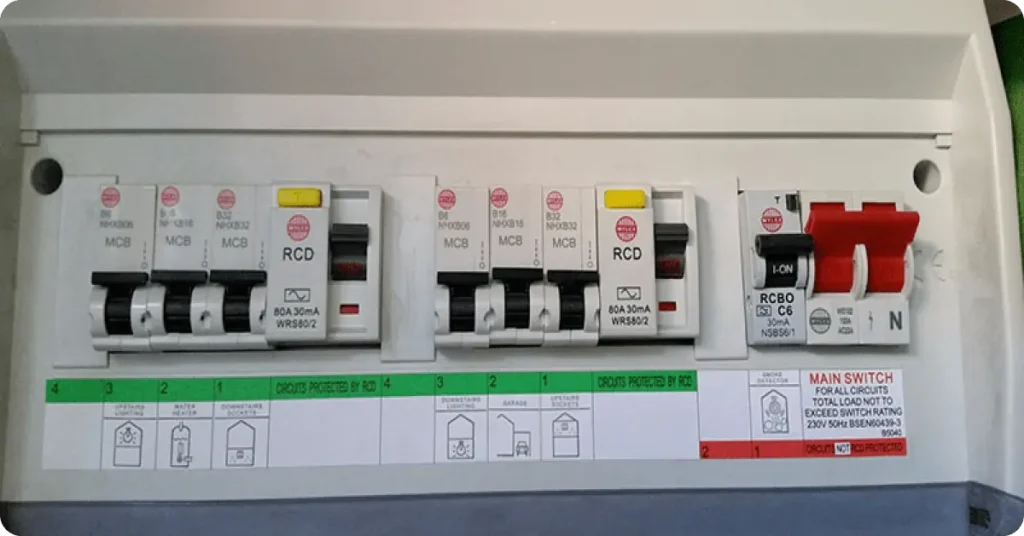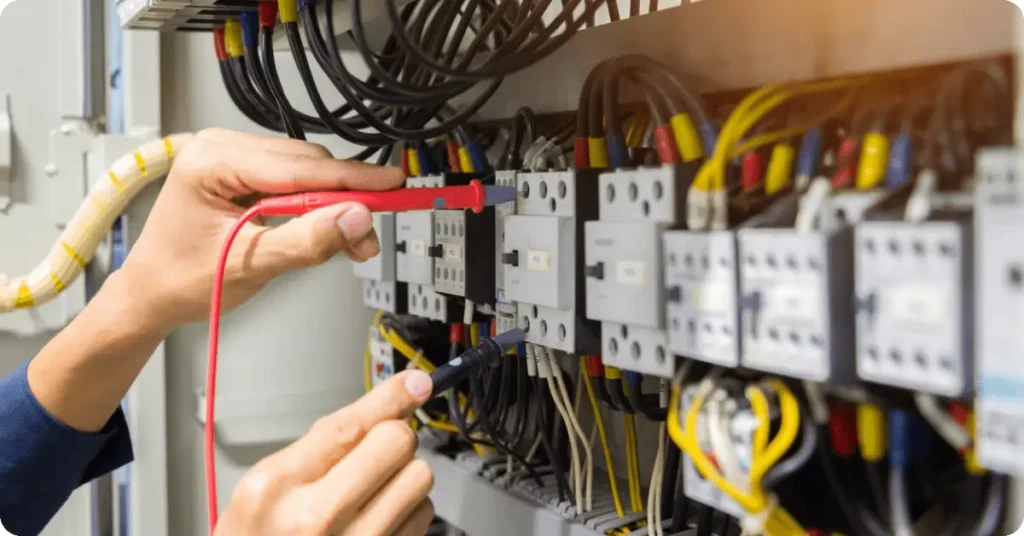
Pool Chemicals and Routine Pool Maintenance
I’m not a pool professional but these are all things I learned from my own experience of owning a pool. I happen to really enjoy the maintenance aspect of it and think anyone that owns a pool can successfully have fantastic pool water. If you’ve just moved to a house with a pool and have never managed one before, I think this article will really help you.
The main pool chemicals we’re going to be checking and adjusting for in our pools are: Chlorine (free & total), pH, Calcium Hardness, Alkalinity, Stabilizer (Cyanuric Acid), and salt (if you have salt). When you open the pool you’ll need to do a big adjustment. After this, I usually check it once a week and make minor adjustments. You’ll learn what the pool wants by what its doing, I’ll explain more later. Your guests should be impressed with your water quality, I guarantee if you just get the levels where they’re supposed to be, your guests will let you know how nice the water feels compared to the toxic over chlorinated and chemically mismanaged pools they’re used to. For me it costs between $400-$600 per season in chemicals (maybe more with chlorine).
Why are the levels important?
I explain in more detail below but the short answer is that getting the levels just right helps with maintaining a minimum chlorine level (good for us humans), and the others such as PH, and calcium hardness help with protecting your equipment and liner. I want my equipment and liner to last as long as possible. On top of that it just feels good to have nice water chemistry. Over the winter the levels are going to get all out of whack because of the rain and snow chemistry and pool overflowing when covered.
Pool Chemicals Explained
Chlorine
The one that burns your eyes in the pool and your skin and lungs when not in the pool. A super harsh chemical that is pretty darn dangerous and needs to be handled carefully. It keeps stuff dead and the water safe. Store it away from anything metal as it WILL corrode metal objects in the same shed, garage, etc. The goal with chlorine is to get it to the perfect level where it’s almost undetectable but still keeps the pool clean. This is MUCH easier with a salt pool. CDC recommends a level of at least 1ppm for pools (so maybe take that with a grain of salt, pun intended). But really, it’s a fun game to see just how close to that 1.0 level you can keep it.
Chlorine goes away because of sunlight. Summertime will present more of a challenge that early and late in the season. I’m not going to get into crazy detail here but there are great articles all over the internet.
Salt
My favorite because it’s super easy and wildly misunderstood. I go by the readout on my salt generator display and adjust it from that. You don’t need to mess with it much because the only times the level changes is based on the water level. Water level down = Salt level up, water level up = Salt level down. Very quickly how it works is that the cell uses electricity to break down NaCl (salt) in to (Cl) Chlorine, and can do it VERY delicately and keep the level very precise. No spikes up and down with a salt pool. Your pool will have salt in it but a VERY small amount compared to the ocean. Don’t be one of those people who thinks the salt is killing stuff, it’s function is to make chlorine when needed. Also feels nice! Ideal range is 2700-3500 ppm. Fun fact so you sound smart, the ocean is 35,000 ppm. Personally I think the cost of a salt generator is priceless, it makes life that much better on so many fronts. If you have an existing pool, do one year of chlorine first so then you really understand.
Calcium Hardness
Very important if you have a gunnite pool but if you have a pool heater I think it’s equally important. For a pool, we want the water to be reasonably “hard” or have a decent concentration of calcium ions. This prevents the erosion of metal parts and also prevents the leaching of lime into the pool. (this happened to me with the old liner, it was very annoying). Ideal range is 200-400 ppm.
pH
pH is the acidity level of the pool. It literally means “Percentage of hydrogen ions.” Obviously an overly acidic pool (low Ph) is not good for us, the liner, etc. Same goes for too high a pH. Most professionals recommend a level between 7.2-7.4 (7.0 is neutral for reference). In NY we run acidic, so you’ll be needing to raise it with Soda Ash to compensate for rainfall and refilling from a hose.
Stabilizer (Cyanuric Acid)
This one is overlooked by too many people. This is the stuff that prevents the UV and other radiation from the sun from instantly eliminating the chlorine. You 100% need to get this level right before you start going crazy with chlorine. For example someone with no stabilizer may be adding pounds of chlorine a day to keep the chlorine level adequate where if you have the stabilizer just right you may not have to add chlorine for days, and only small amounts when you do. GET THE LIQUID ONE. Ideal range is 30-70 ppm for chlorine pool, 50-70 ppm for salt pool.
Alkalinity
Just like stabilizer is the buffer for chlorine, Alkalinity is the buffer for the pH. Same principle applies. Get it right and your life will be easier and your pool will be healthier. Ideal range is 80-120 ppm.
Shock
Shock breaks down anything that the chlorine has killed. I typically only shock after a pool party. If your pool smells like chlorine you need to shock it, it should not smell like chlorine! Also don’t let kids in your pool that are going to pee in it, that’s just gross.
Next Steps
Now that you’re armed with this new knowledge of what each of these pool chemicals are and what they do, you need to get that water in to shape!
Firstly, get basic test strips that show at least Free Chlorine, Total Chlorine, PH, Alkalinity, Stabilizer (Cyanuric Acid), Calcium Hardness

Calculate the total volume of your pool in gallons and write it down, you need to know this for any adjustments.
Start making adjustments by using the strips to guide you. Don’t get a test kit unless you’re really into it. If you want, take the water to Leslies for an analysis, they’re pretty good in my experience and will give you a complicated list of stuff to do but don’t worry about that. You really want to find out how much of each chemical you need to purchase.. Whatever you do, make only small adjustments at a time. Don’t try to do all of the adjustments in one shot. STABILIZER & SALT CAN NOT BE DECREASED without emptying water from the pool so don’t be that person. For me, it takes about a week for me to get it from terrible conditions to perfect if I add one chemical per day. I’ll usually check it and make adjustments in the morning before I leave for work and then again when I get back. Don’t over think it!
You’re most likely going to have everything at 0 at the beginning of the season which is good because it makes the math that much easier.
Apply the chemicals as directed on the containers, it’s that easy once you know what to add. And always go at least 75%-50% less and work it up, just as a failsafe in case you put too much. Only adjust one of the parameters per day. Check it again the next day and see where you’re at and keep going.
Lastly, Listen to your pool
With a little practice, probably within the first season, you’ll really get a feel of what’s going on. Learn to really listen to the pool, see what the symptoms are and figure out why you’re experiencing what you’re experiencing. For example, if you’re getting surface algae repeatedly, don’t just keep shocking it and wasting money on shock and chlorine. You probably have low stabilizer or maybe there’s something deeper like phosphates or nitrates that a water analysis will help figure out. It always pays to be proactive by checking the levels and adjusting as necessary.
After you get everything just right, keep an eye on it every few days, at minimum weekly. You’ll find that after a bit you’ll just know what it needs for adjustment. It might sound intense but it really is super easy, nothing beats having a pool with perfect chemistry. Even if you paid a company to manage it, it won’t be nearly as good as if you do it yourself. Goooooood luck!




Pingback: What is Pool Bonding? -